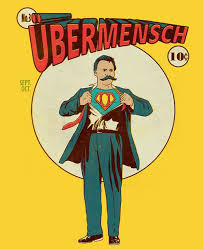
The entrepreneur as Nietzschean ubermensch is one of the more unfortunate features of contemporary business journalism. It is generally an ignominious experience for the writer, misses the real tensions and lessons in the entrepreneurial process and, worse, universally suppresses the function of markets in favour of the incumbent, ironically debilitating the core usefulness of capitalism.
Today we have an example at the AFR where Julie-Anne Sprague offers some nice texture on Andrew Forrest but misses the real point of the story of Fortescue:
In a rare one-on-one interview, Forrest opens up about the challenges he has confronted, how he almost gave up, and the importance of always having a “Plan B”.
Forrest picked the China iron ore boom early but tainted by the fallout from his previous venture at Anaconda Nickel, local support for Forrest and Fortescue was scant from the beginning.
…“That’s not the motivator,” he says. “The motivator is to be constantly reminded how difficult the task is and therefore to not move without a Plan B because if it can go wrong, it will.”
A Plan B? It’s a comment at odds with the view that Forrest’s unwavering determination to break BHP and Rio’s cosy Pilbara duopoly has been through brazen, unbridled enthusiasm.
A company with too much debt and, until recently, one iron ore price shock from serious trouble.
…Fortescue frantically preserved capital expansions, with the Kings mine put on hold, and slashed costs while refinancing its staggering debt pile.
More than 1000 staff from the “Fortescue family” were sacked. It began talks to sell off a minority stake in its rail and port infrastructure, estimated to raise $4 billion.
A number of analysts and mining industry executives believe luck has saved Fortescue’s hide. Had it not been for iron ore prices rebounding in the months after September 2012 – so much so that by December 27 Fortescue restarted expansion plans – the company would have collapsed.
“That is complete crap,” Forrest says.
“Fortescue does things that are brave Plan As because it has a bullet proof Plan B. So the analyst who said they were lucky it rebounded just does not know Fortescue. Fortescue was never going anywhere.”
…“Fortescue is so much fun now,” he says.
“We are now in a position where we can opportunistically expand. We don’t have to take these massive steps where the Plan B has to be so bulletproof it’s going to completely protect the company.”
I am a big fan of Forrest. He’s clearly the pick of the boganaires, with social conscience and a generous spirit, so don’t get me wrong. My problem is with the AFR , which has failed to capture the Fortescue (FMG) moment in this or any other article that I know of.
FMG remains in the fight of its life and in an historic race to rid itself of debt before iron prices fall to its break even point. That’s why it’s trading on a price-earnings ratio of five versus more than double that for its peers. That is the real suspense and fascination around Andrew Forrest and absenting it from the article does neither readers, markets nor the nation and history any favours.

